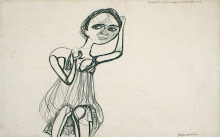
Astika (Sanskrit, āstika; "orthodox") and Nastika (nāstika; "heterodox") are technical terms in Hinduism used to classify philosophical schools and persons, according to whether they accept the authority of the Vedas as supreme revealed scriptures, or not.By this definition, Nyaya, Vaisheshika, Samkhya, Yoga, Purva Mimamsa and Vedanta are classified as astika schools.
The eight "limbs" or steps prescribed in the second pada of the Yoga Sutras are: Yama, Niyama, Asana, Pranayama, Pratyahara, Dharana, Dhyana and Samadhi.
Yama refers to the abstentions
· Ahimsa: abstention from violence
· Satya: abstention from lying; truth
· Asteya: abstention from theft, and by extension, non-covetousness
· Aparigraha: abstention from possessions, and by extension, abstaining from greed for possessions
Niyama refers to the observances
· Shaucha: purity
· Santosha: contentment
· Tapas: austerity
· Svadhyaya: Self study; introspection
· Ishvarapranidhana: surrender, or devotion, to God ('particularly' Ishvara [creation per se])
Asana: Posture of the body, especially perfect posture for meditation.
Pranayama: Control of prana ('life force') or vital breath
Pratyahara: withdrawal of the mind, defined by Vyasa as "that by which the senses do not come into contact with their objects and, as it were, follow the nature of the mind.”
Dharana: Fixing the attention on a single object; concentration
Dhyana: Meditation
Samadhi: Oneness
Kosheen – Hungry (trance remix)
